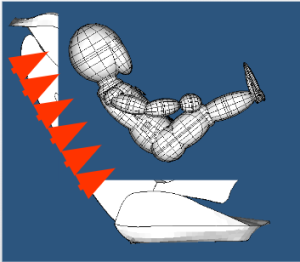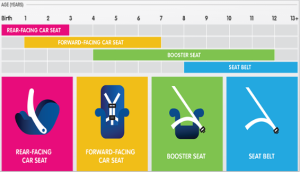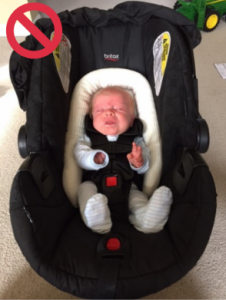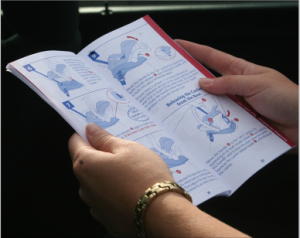2 Safe Transportation
On This Page
- Five Ways Child Occupant Restraints Prevent Injury
- Multidisciplinary Team Approach
- Restraint Selection Factors
- Restraint Options
- Adding Extras
Safe Transportation
- Many factors impact how a child and family travel
- Medical diagnoses
- Physical challenges
- Behavioral challenges
- Safe access to services and communities important for all children
- MD appts/Therapy appts/Hospital appts
- Family destinations
- Preferred outings – birthdays/play dates/etc.
Five Ways Child Occupant Restraints Prevent Injury
- Prevent ejection
- Allows the body to ride down with vehicle
- Contacts the strongest body parts
- Distribute forces over most extensive area
- Protects head, neck, and spinal cord

Multidisciplinary Team Approach
A multidisciplinary approach must be utilized to involve the patient, caregivers, family, child’s medical team, child passenger safety technicians, schools, social workers, durable medical equipment (DME) vendors, etc.
Restraint Selection Factors
- Size and age
- Medical diagnoses or procedures
- Positioning requirements during travel:
- Flat? On stomach? On back?
- Side lying?
- Bend at hips?
- Sit unsupported?
- Optimal safety and positioning
- Availability and/or affordability of restraints
- Family vehicles
- Other occupants
- Family choices

Restraint Options
- Conventional or Adaptive restraints
- Conventional always first
- Rear-Facing as long as possible
- Never modify structure of restraint to make it fit child
- Modifications impact safety
- Always read and follow instructions for restraint and vehicle
Adding Extras
- No unapproved products or non-regulated products
- Compromise integrity of car seat
- Voids warranty of car seat
- Impacts safety and overall performance of car seat
- ONLY exception:
- Accessories made for specific model of car seat approved by car seat manufacturer


